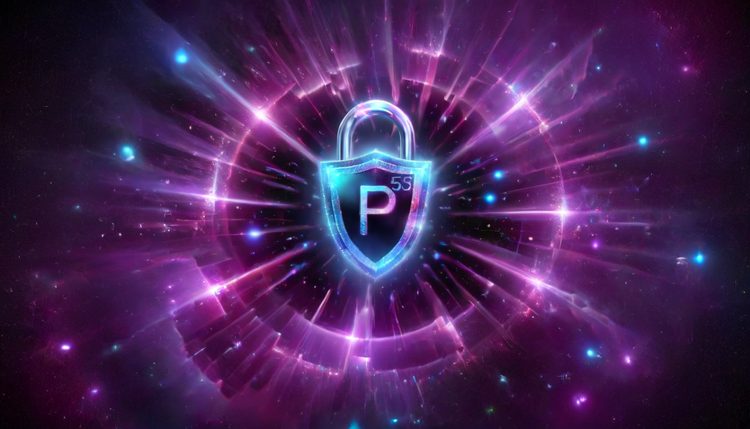Stargazing into Security: The Journey to Crafting P55, the Uncrackable Hash

Introduction: The Poetic Musings of Hashing
Explaining complex concepts can be challenging, and I've been wrestling with this task for the past few days. The idea is crystal clear in my mind, almost as if I can see it right before my eyes. Let me attempt to articulate it. However, I must caution you that it might come across as the musings of a budget poet or a rambling, inebriated author.
The Legacy of Hashes: A Starlit Comparison
For many years, hashing technology has been the cornerstone for storing passwords securely, enabling their later verification. This method involves hashing an incoming password in the same way as the stored hash, then comparing the two. Because legacy hashes consistently produce identical outcomes, they facilitate easy comparison.
The Limitations of Predictability in Cybersecurity
This system is generally effective, but the predictability of legacy hashes is a drawback. Their security strength is limited to the number of characters represented. By systematically guessing each character, from 'a' to 'b' and so forth, until the guessed input's hash matches the stored hash, one can deduce the original input through brute force.
Envisioning a New Universe: The Birth of Faux-Dynamic Hashes
Now a mental exercise: We are standing in a field on a clear night, looking up to see the vast emptiness of space without stars, nebulae, or even the moon. This represents the hash with no input. When we input a character, it's as if the heavens light up with trillions of stars, the Milky Way, and stunning constellations, reminiscent of the night sky we're accustomed to. Though these celestial bodies appear fixed and the stars are an illusion. With one character input, our star-filled sky actually contains only one star. Guessing this character allows us to produce a sky that looks identical. Once we achieve the same celestial view, we've found the original input. Naturally, changing or adding to the input alters the positions of the stars in the sky, representing the new input.
Hashes have always functioned in this manner. Over time, more complex algorithms have been developed, with a notable increase in hash length to counteract rising computational abilities and cryptanalytic methods. However, the complexity of the algorithm becomes irrelevant if its output is predictable, leaving it susceptible to brute-force attacks. To combat this, new technology have been introduced, significantly lengthening the time required to brute-force a password. This approach comes at a cost: not only does generating the hash require more power and sometimes more time, but guessing it also demands more energy. From my perspective, this approach seems like a desperate measure and an unfavorable path, as it incurs higher costs for legitimate users as well.
In the cybersecurity field, we've attempted to innovate what I refer to as ‘faux-dynamic hashes’. We try to move the stars to trick the hacker. This method involves adding random characters, known as salt and pepper, to either the beginning or end of the password. This strategy effectively extends the number of characters that must be brute-forced. However, this approach has its shortcomings. Firstly, the salt and pepper must be stored somewhere, peppers are often saved in a configuration file and the salts are often placed in the database alongside the hash they're meant to secure. If an attacker accesses the hash but not the salt, the hash remains static. The Milky Way is still appearing as still as time to a child on the eve of Christmas.
The P55 Revolution: A Cosmic Shift in Hashing
We need to break free from the bonds of the past and invent a solution that is as good as SHA512 but that does not generate predicable results. We are trapped in Schrodinger’s box, frozen in time, and all we focus on is the vial with poison that may or may not be broken. At least that’s how I felt about static hashing algorithms before I started working on the creation of, what now is called, P55. Standing on the shoulders of giants I decided to take SHA512 and use it in new and imaginative ways. Creating something that has never been seen before and making the impossible, possible. In other words work towards making a verifiable dynamic technology.
Redefining Security: The Simplicity and Strength of P55
Imagine once more gazing into the night sky, but through the lens of P55. With a single letter input, "a" we introduce it into this vastness, resulting in a space filled with a nearly infinite array of stars, galaxies, and nebulae, all radiating in an array of unimaginable colors. Moreover, you can perceive across 10^379 dimensions, each teeming with as many stars. The most astonishing aspect is that each time you look at the sky, the positions of the stars shift across all dimensions, including our own. In the blink of an eye, the familiar becomes unrecognizable. The illusion of a plentiful sky but in reality only contain one star is no longer there. We can no longer use brute-force to get the same sky since the sky is constantly changing. Even if you know the one letter password of “a” getting the same sky twice is virtually impossible thereby eliminating the brute force threat and we don’t need to bother with salt or pepper. I might have gone overboard with the length of the hash but computers are fast and getting faster so we might as well overdo it.
The strength, no longer, come from long and complex passwords with special characters. It comes from the extreme complexity of the technology and the resulting hash. We can return to easy to remember passwords, although they should not be easily guessable. There are plenty more security features built into the technology that I can’t go into now.
Beyond the Technology: Ensuring Unique System Security with P55
But that was not enough, I had to make sure that each system that uses P55 is completely different from other P55 systems so that an adversary can’t purchase a P55 system and then use it in order to break P55s. The road to breaking the hash should be as long and complicated as possible.
Let us once again (last time, I promise) vision ourselves being somewhere else. This time we are in a vast gallery filled with an endless array of unique paintings, each depicting a different night sky full of stars, galaxies, and nebulae. Each painting represents a system using a P55. No two paintings are alike. This ensures that if someone were to study one painting in detail, learning every star and galaxy it contains, this knowledge wouldn’t help them to understand the next paining in the collection.
Just as each viewer might interpret the scenes differently, each P55 system operates on its unique set of principles and configurations, making it nearly impossible for an adversary to use the understanding of one system to decipher the rest. The uniqueness of each painting, like the uniqueness of each P55 system, acts as a safeguard, ensuring that familiarity with one does not equate to mastery over others. This variety not only enriches the gallery's beauty but also its security, protecting the entire collection from being compromised by the study of a single piece.
The Journey of Innovation: From Concept to Reality
Diving into P55 felt like trying to map a sky where stars play hide and seek every time you blink. Figuring out how to secure this tricky space led me to a pretty wild idea: what if I just didn't bother to pin anything down? Getting to this point was a bit of a ride, fueled by stubbornness, a few too many late-night drinks, and learning to laugh off the day's faceplants and confusions.
P55 needed to be different. It had to ditch its old, battered playbook, the one held together with hope and duct tape. This technology wasn't just about being tough against the usual hacker tricks; it was about sending them on a wild goose chase. To crack P55, you'd have to forget everything you thought you knew about cracking codes and start from scratch. But hey, that's the dance of cybersecurity, right? We throw out a challenge, someone finds the loophole, and the game levels up.
A Dare to the Digital World: The Unbreakable P55
So, here's the deal, served with a side of cheekiness: I dare you to break P55. I'm not quite ready to wrestle with ransomware yet, and cooking up P55 was too much fun. Let's see what you've got!
If you think I am full of it, prove me wrong! Talk is cheap and don’t expect us to give you the technology for an easy access to the answer. If you can’t hack it, reboot the kitchen! Start here: Challenge





